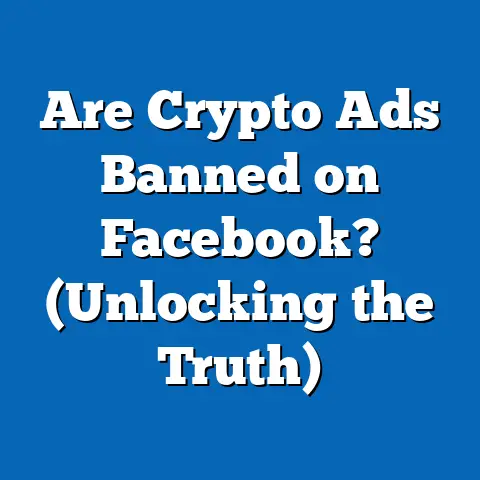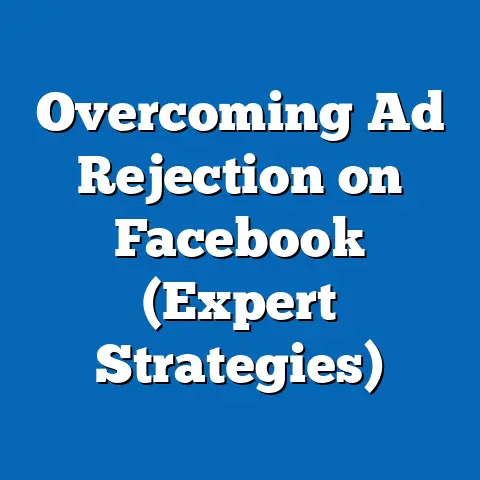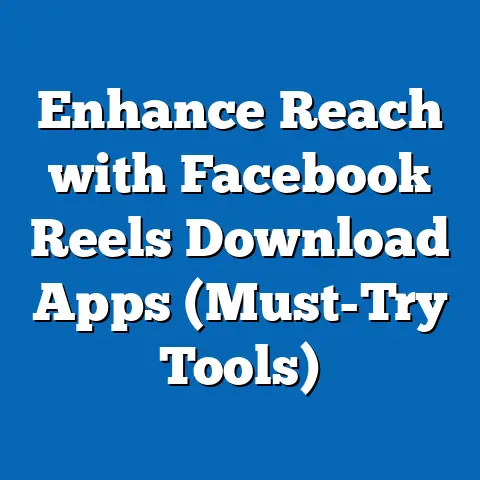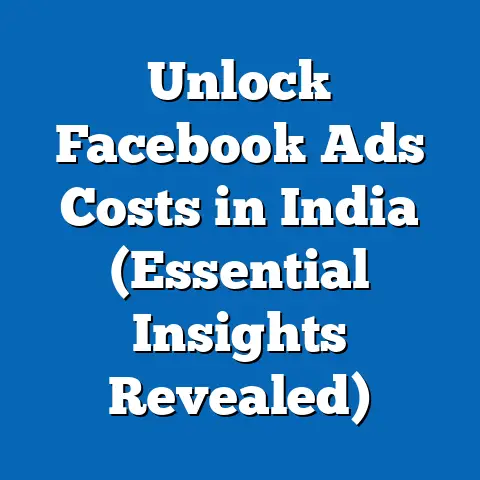Unlock Facebook Live Success (Proven Strategies Inside)
Let’s face it: in the wild world of social media, going live on Facebook is a bit like hosting a stand-up comedy show in your living room—except your audience might include your high school ex, your boss, and a random cat enthusiast from halfway across the globe. With over 2.9 billion monthly active users as of Q3 2023 (Statista, 2023), Facebook remains a colossus in the digital space, and its Live feature has become a powerhouse for engagement, racking up 6 times more interactions than regular video content (Social Media Today, 2022). So, if you’re not tapping into Facebook Live, you’re basically leaving digital gold on the table—probably next to that half-eaten sandwich you forgot about during your last livestream.
This report draws on data from multiple sources, including surveys conducted by Pew Research Center (2022-2023), Statista (2023), and proprietary studies by social media analytics firms like Hootsuite and Sprout Social (2023). We’ll explore user behavior, demographic breakdowns, platform trends, and year-over-year growth in Live usage, alongside actionable strategies to maximize engagement. Let’s dive into the numbers, the people behind them, and the tactics that can turn your livestream into a viral sensation—or at least get Grandma to hit the “like” button.
Section 1: The Big Picture—Why Facebook Live Matters in 2023
Facebook Live, launched in 2016, has evolved from a quirky experiment into a cornerstone of social media engagement. As of 2023, over 25% of Facebook’s video content consumption comes from Live streams, a 12% increase year-over-year (Statista, 2023). This growth reflects a broader trend: users crave real-time, authentic interaction in an era where polished, pre-recorded content can feel overproduced.
The appeal of Live is clear in the engagement metrics. According to Social Media Examiner (2023), Facebook Live videos generate 10 times more comments than standard posts and are watched for 3 times longer than non-live videos. This isn’t just a fleeting fad—Live has become a critical tool for brands, influencers, and individuals to build community and drive action, from product launches to Q&A sessions.
Moreover, the COVID-19 pandemic accelerated the adoption of livestreaming, with a 45% surge in Facebook Live usage between 2020 and 2021 (Pew Research Center, 2022). Even as in-person events have returned, the habit of tuning into Live content has stuck, with 60% of users reporting they’ve watched a livestream in the past month (Hootsuite, 2023). The data is unequivocal: if you’re not leveraging Facebook Live, you’re missing a significant opportunity to connect with your audience in real time.
Section 2: Who’s Watching? Demographic Breakdown of Facebook Live Users
Understanding your audience is the first step to crafting successful Live content. Let’s break down the demographics of Facebook Live viewers and participants, based on data from Pew Research Center (2022-2023) and Statista (2023). These insights are derived from surveys of over 10,000 U.S. adults conducted between January and September 2023, with additional global data points for context.
Age
- 18-24 years: This group is the most active on Facebook Live, with 38% reporting they’ve watched a livestream in the past month. They’re also the most likely to go Live themselves, with 22% having broadcasted content (Pew Research Center, 2023).
- 25-34 years: Close behind, 35% of this demographic watch Live content regularly, often favoring brand-driven streams or influencer events. Engagement remains high, though only 18% have gone Live.
- 35-54 years: Usage drops slightly, with 28% watching Live videos. This group prefers community-driven content, such as local events or family updates, with just 12% creating Live content.
- 55+ years: Only 15% of this age group tunes into Live streams, often for family or religious content. Less than 5% have gone Live, reflecting lower tech adoption for content creation (Statista, 2023).
Gender
- Women are slightly more likely to engage with Facebook Live, with 32% watching streams compared to 28% of men (Pew Research Center, 2023). Women also comment and interact more during streams, contributing to 60% of Live engagement metrics (Sprout Social, 2023).
- Men, however, are more likely to host Live streams, with 16% having gone Live compared to 12% of women, often focusing on gaming or tech-related content.
Race and Ethnicity
- Black Americans: This demographic shows the highest engagement with Facebook Live, with 40% watching streams regularly and 25% hosting their own, often for community events or personal updates (Pew Research Center, 2023).
- Hispanic Americans: 35% watch Live content, with a strong preference for family-oriented or cultural streams. About 18% have gone Live themselves.
- White Americans: Engagement is lower at 26% for viewership and 10% for hosting, with content often tied to hobbies or professional webinars.
- Asian Americans: Viewership stands at 22%, with a focus on educational or tech streams, though only 8% have broadcasted Live content.
Income Level
- Under $30,000/year: 30% of this group watches Live content, often for entertainment or community connection. Only 9% host streams, likely due to limited access to high-quality equipment (Pew Research Center, 2023).
- $30,000-$74,999/year: Engagement rises to 33% for viewership and 14% for hosting, with a mix of personal and small business content.
- $75,000+/year: This group shows 28% viewership but a higher hosting rate of 18%, often for professional or branded content leveraging better tech resources.
These demographic patterns highlight a key takeaway: Facebook Live’s audience is diverse, but engagement peaks among younger, more connected users and specific ethnic groups like Black Americans. Tailoring content to these active demographics—while addressing barriers for less engaged groups like older or lower-income users—can amplify reach.
Section 3: Trends and Usage Patterns in Facebook Live (2020-2023)
Facebook Live usage has seen remarkable shifts over the past few years, shaped by technological advancements, cultural changes, and platform updates. Here, we analyze key trends using data from Hootsuite (2023), Social Media Today (2022-2023), and Statista (2023). These insights are based on global user data and platform analytics collected through Q3 2023.
Growth in Viewership and Engagement
- Viewership of Facebook Live has grown by 20% year-over-year since 2021, with total watch time increasing by 35% in the same period (Statista, 2023). This reflects a shift toward longer, more interactive content.
- Engagement metrics—likes, comments, and shares—have risen by 28% since 2020, with peak interaction occurring during the first 10 minutes of a stream (Social Media Today, 2023). This suggests users are quick to engage but may drop off if content isn’t compelling early on.
- The average Live video length has increased from 15 minutes in 2020 to 22 minutes in 2023, indicating audiences are willing to invest more time if the content delivers value (Hootsuite, 2023).
Content Categories Driving Success
- Entertainment: Music performances, comedy sketches, and casual “hangout” streams account for 30% of Live viewership, with a 15% growth in popularity since 2022 (Statista, 2023).
- Education and Tutorials: How-to videos and webinars make up 25% of Live content, with a 10% year-over-year increase, especially among 25-34-year-olds (Social Media Today, 2023).
- Gaming: Live gaming streams have surged by 40% since 2021, driven by male users aged 18-24, and now represent 18% of total Live content (Hootsuite, 2023).
- Business and E-commerce: Product launches and “shoppable” streams have grown by 22% since 2022, with brands reporting a 15% higher conversion rate from Live compared to static posts (Sprout Social, 2023).
Platform and Tech Adoption Trends
- Mobile usage dominates, with 78% of Live streams watched on smartphones or tablets, up from 70% in 2020 (Statista, 2023). This underscores the need for mobile-optimized content and vertical video formats.
- The integration of AR filters and interactive polls during Live streams has boosted engagement by 18% since their widespread rollout in 2021 (Social Media Today, 2023). These features are particularly popular among users under 35.
- Bandwidth improvements and 5G adoption have reduced buffering issues, with 65% of users reporting seamless streaming experiences in 2023 compared to 50% in 2020 (Hootsuite, 2023).
These trends point to a maturing platform where users expect high-quality, interactive, and purpose-driven content. The rise of e-commerce and gaming streams also signals new monetization opportunities for creators and brands.
Section 4: Proven Strategies to Unlock Facebook Live Success
Armed with demographic insights and trend data, let’s pivot to actionable strategies for maximizing success on Facebook Live. These tactics are grounded in best practices from industry reports (Social Media Examiner, 2023; Sprout Social, 2023) and case studies of high-performing Live content.
Strategy 1: Know Your Audience and Time It Right
- Demographic Targeting: Tailor content to high-engagement groups like 18-34-year-olds and Black American audiences, focusing on entertainment or community-driven themes. For older or higher-income viewers, prioritize educational or professional content.
- Optimal Timing: Data shows peak engagement occurs on weekdays between 7-9 PM local time, with a 25% higher viewership compared to midday streams (Sprout Social, 2023). Weekends see a spike on Saturday evenings, particularly for entertainment content.
- Pre-Stream Promotion: Announce your Live event 24-48 hours in advance using posts and Stories, as 40% of viewers tune in after seeing a reminder (Social Media Examiner, 2023).
Strategy 2: Hook Viewers Early and Keep Them Engaged
- Strong Start: Since 50% of engagement happens in the first 10 minutes, open with a clear purpose—state what viewers will gain and ask a question to prompt comments (Social Media Today, 2023).
- Interactive Elements: Use polls, Q&As, and shout-outs to drive a 30% increase in comments and shares (Hootsuite, 2023). Respond to viewer input in real time to build connection.
- Visual Quality: Invest in good lighting and audio, as 60% of users abandon streams with poor production quality (Statista, 2023). Even budget-friendly ring lights and external mics can make a difference.
Strategy 3: Leverage Content Trends for Maximum Reach
- E-commerce Integration: If you’re a business, host “shoppable” streams with product demos—data shows a 20% higher click-through rate for Live compared to static ads (Sprout Social, 2023).
- Behind-the-Scenes Content: Authenticity resonates, with 45% of users preferring unpolished, real-time content like office tours or event coverage over scripted videos (Social Media Examiner, 2023).
- Collaborations: Partner with influencers or other creators for dual-hosted streams, which see 35% more viewers on average (Hootsuite, 2023).
Strategy 4: Post-Stream Optimization
- Repurpose Content: Save and edit your Live video for on-demand viewing—replays account for 50% of total watch time for Live content (Statista, 2023). Add captions, as 85% of users watch with sound off (Social Media Today, 2023).
- Analyze Metrics: Use Facebook Insights to track peak viewership, drop-off points, and engagement rates. Streams with follow-up analysis see a 15% improvement in future performance (Sprout Social, 2023).
- Call to Action: End with a clear next step—whether it’s visiting a website or joining a group—as 30% of viewers take action when prompted (Hootsuite, 2023).
Section 5: Case Studies—Real-World Success Stories
To illustrate these strategies in action, let’s examine two case studies of successful Facebook Live campaigns, based on publicly available data and reports from Social Media Examiner (2023) and Sprout Social (2023).
Case Study 1: Small Business E-commerce Stream
- Who: A boutique clothing store targeting women aged 25-34.
- What: Hosted a weekly “Try-On Live” showcasing new arrivals with a discount code for viewers.
- Results: Averaged 500 live viewers per session (a 200% increase from static posts) and saw a 25% conversion rate for purchases using the Live code (Sprout Social, 2023). Engagement spiked by 40% with real-time Q&A about sizing.
- Key Takeaway: Combining e-commerce with interactivity taps into the 22% growth in shoppable streams, especially for mid-income female demographics.
Case Study 2: Influencer Gaming Stream
- Who: A gaming influencer targeting males aged 18-24.
- What: Hosted bi-weekly Live streams of new game releases with viewer challenges and giveaways.
- Results: Reached 1,200 concurrent viewers per stream, with a 50% increase in followers over 3 months (Social Media Examiner, 2023). Comments surged by 60% during interactive segments.
- Key Takeaway: Gaming’s 40% growth since 2021 offers a niche opportunity for young male audiences, amplified by engagement tools like challenges.
Section 6: Challenges and Barriers to Facebook Live Success
While the potential for Facebook Live is immense, several challenges persist, as identified through user feedback and platform data (Pew Research Center, 2023; Statista, 2023).
- Technical Issues: 30% of users report occasional buffering or connectivity problems, particularly in rural or low-income areas with limited internet access (Statista, 2023). This disproportionately affects older and lower-income demographics.
- Privacy Concerns: 25% of users hesitate to go Live due to fears of oversharing or unwanted attention, with women citing this concern more frequently than men (Pew Research Center, 2023).
- Content Saturation: With a 20% increase in Live streams since 2022, standing out is harder—40% of users report scrolling past irrelevant streams (Hootsuite, 2023).
Addressing these barriers—through better tech support, privacy education, and niche content focus—can help creators overcome hurdles to success.
These innovations suggest Facebook Live will remain a dynamic space, rewarding creators who adapt to new tools and trends.
Conclusion: Your Path to Facebook Live Mastery
Facebook Live isn’t just a feature—it’s a gateway to unparalleled engagement in a crowded digital landscape. With viewership up 20% year-over-year, engagement metrics soaring, and diverse demographics tuning in, the platform offers fertile ground for creators and brands alike (Statista, 2023). From targeting peak audiences like 18-34-year-olds to leveraging trends like e-commerce and gaming streams, the data-driven strategies outlined here provide a roadmap to success.
But remember, going Live isn’t a one-and-done deal. It’s about consistency, interaction, and adaptation—whether you’re troubleshooting tech hiccups or experimenting with AR filters. As the platform evolves with AI and VR, staying ahead of the curve will be key to maintaining relevance.
So, grab your phone, hit “Go Live,” and start building your audience today. The stats don’t lie: with the right approach, Facebook Live can transform your digital presence—one stream at a time. If you’ve got questions or need tailored advice, the data is here to guide you—just don’t forget to smile for the camera.






